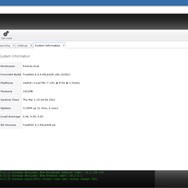

I then symlink them into place and test and rollback til' my heart's content. I've been applying this technique on OS X using MacZFS to create ZFS filesystems from plain files as the backend. For example, you can use it to test and rollback migration steps. Zfs rollback you will be transported back to that point in time and can restart your services as if nothing ever happened.Īs a developer, you can also use this technique on your local system. Zfs destroy all went bad, no problem, just stop all running processes that would have files open on that dataset and do this: If all goes well, you can just remove the snapshot like this: This was all before the OpenZFS project was an option, and seeing as how. bit rot, before they reach your application. OpenZFS uses the power of modern CPUs to checksum and validate data at every step to detect data integrity errors A.K.A.

I've since moved on to using the FreeBSD kernel with a full-fledged implementation. OpenZFS is a modern, Open Source file system for modern architectures, and takes more data integrity precautions than any file system before it or since. Fortunately, like OpenSSH, OpenZFS really is. The same is becoming true of OpenZFS, the community branch of Sun Microsystems’ revolutionary, and eventually open sourced enterprise file system. It's stable, but was (and still is) a minimalistic implementation, lacking most of the features found in modern ZFS releases. OpenSSH was the right solution at the right time and remains the de facto remote login tool on Internet-connected systems, open source and proprietary. One note: If you don't clean up your snapshots later, they will continue to grow and take up space as changes happen to the file system. When I first fell in love with ZFS, it was using MacZFS. originally developed the ZFS file system and.
#Openzfs vs maczfs mac os x
ZFS does all of this on the block level and keeps track of the data changes as we go forward from this point. was ported to Linux, Mac OS X (continued as MacZFS), as well as FreeBSD. Zfs snapshot notice this happens instantaneously. Just before we checkout our tag for the latest release, we do the following:

We will have our buildout on a ZFS dataset called data/buildout. It is a volume manager among other things, though the bit we care about is making snapshots and quickly rolling back if needed.ĭoing a release with ZFS ensures confidence that you can roll back in a matter of seconds. OpenZFS is an awesome filesystem that has features beyond that of a standard system. I'll let you jump over here to read the details about it, but here are the basics: ZFS is the last filesystem you will ever need. One of the really nice features of the OS that we can leverage is the ZFS filesystem to make our snapshots. Filesystem snapshots are easierĪt Six Feet Up, we love deploying onto FreeBSD. However, this could still take time to create, and even more time to use as your backup rollback plan. Have you ever wanted to release a new version of your site while maintaining a way to quickly roll back if something goes wrong? ZODB sizes are always growing, so how do you backup a state in time of the blob storage that can be even bigger? You could use the in your buildout and take an incremental backup right before the release.


 0 kommentar(er)
0 kommentar(er)
